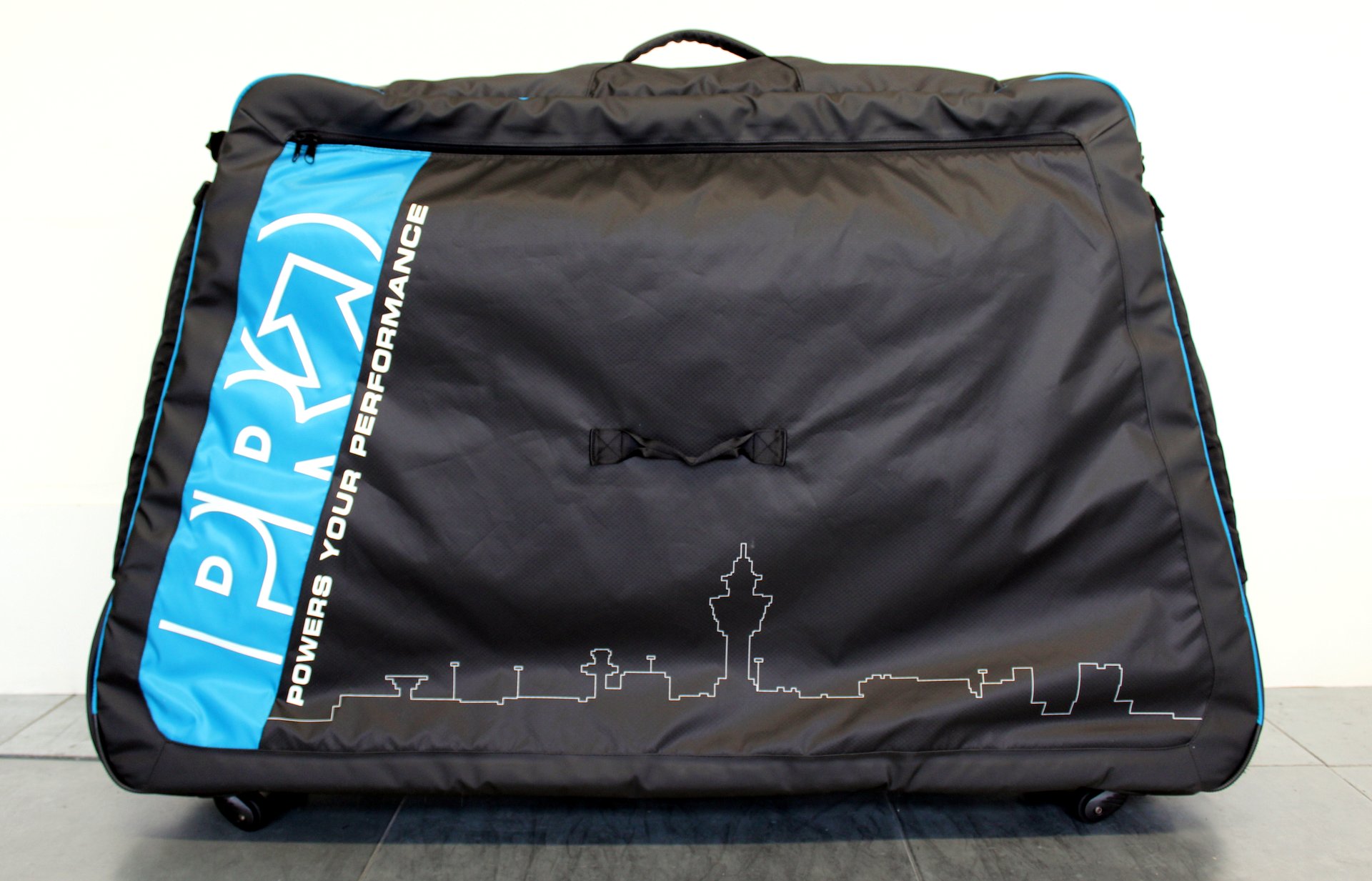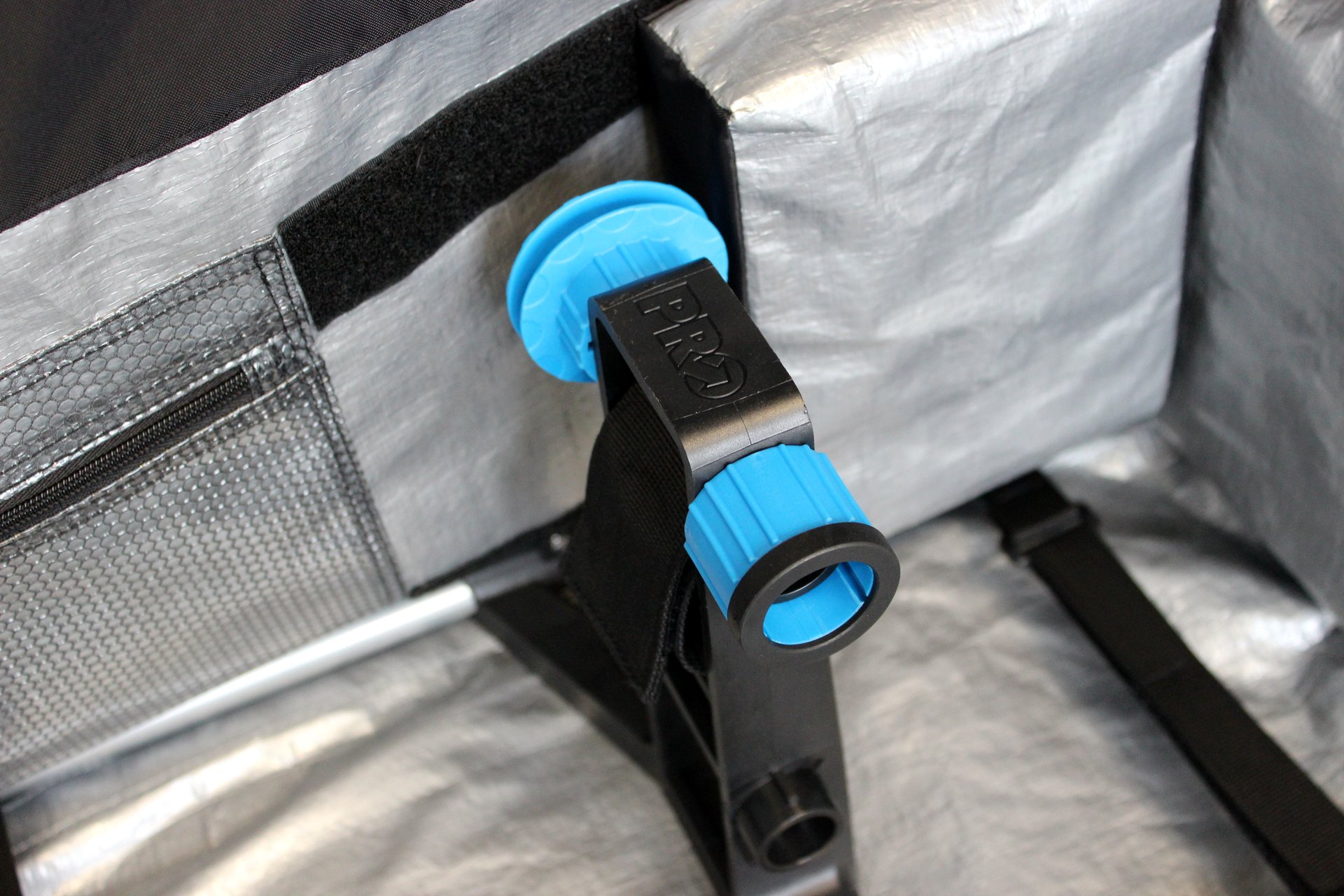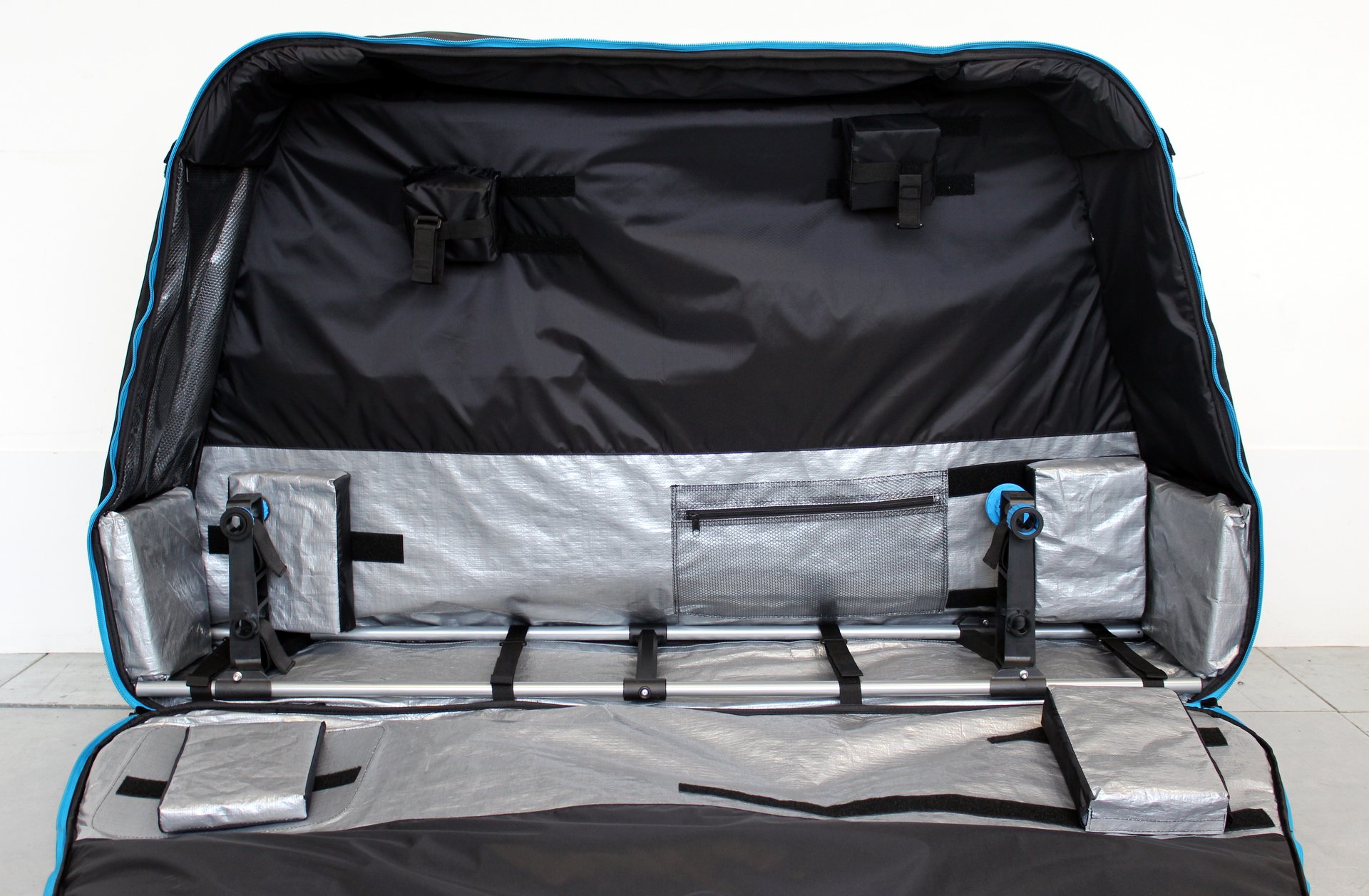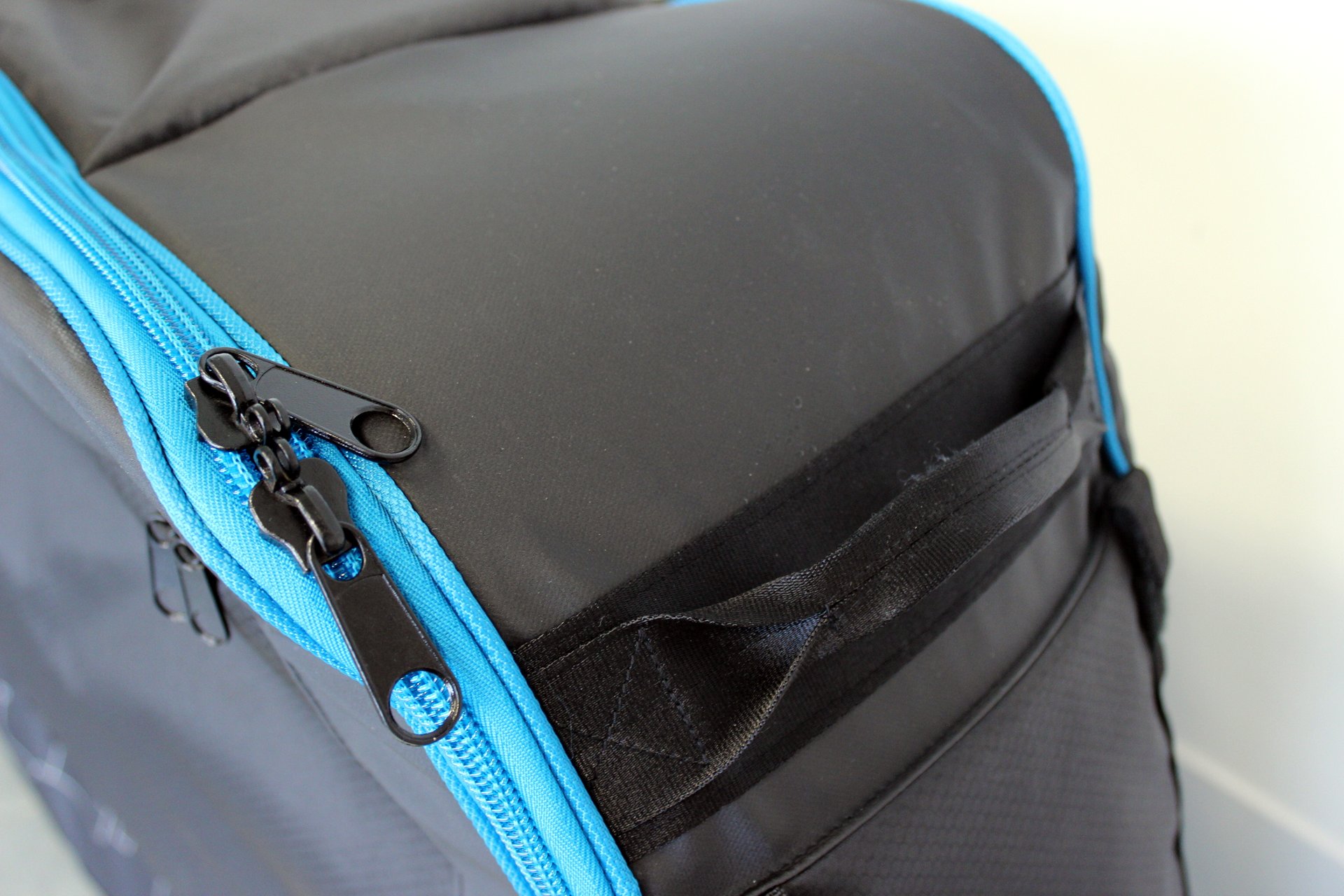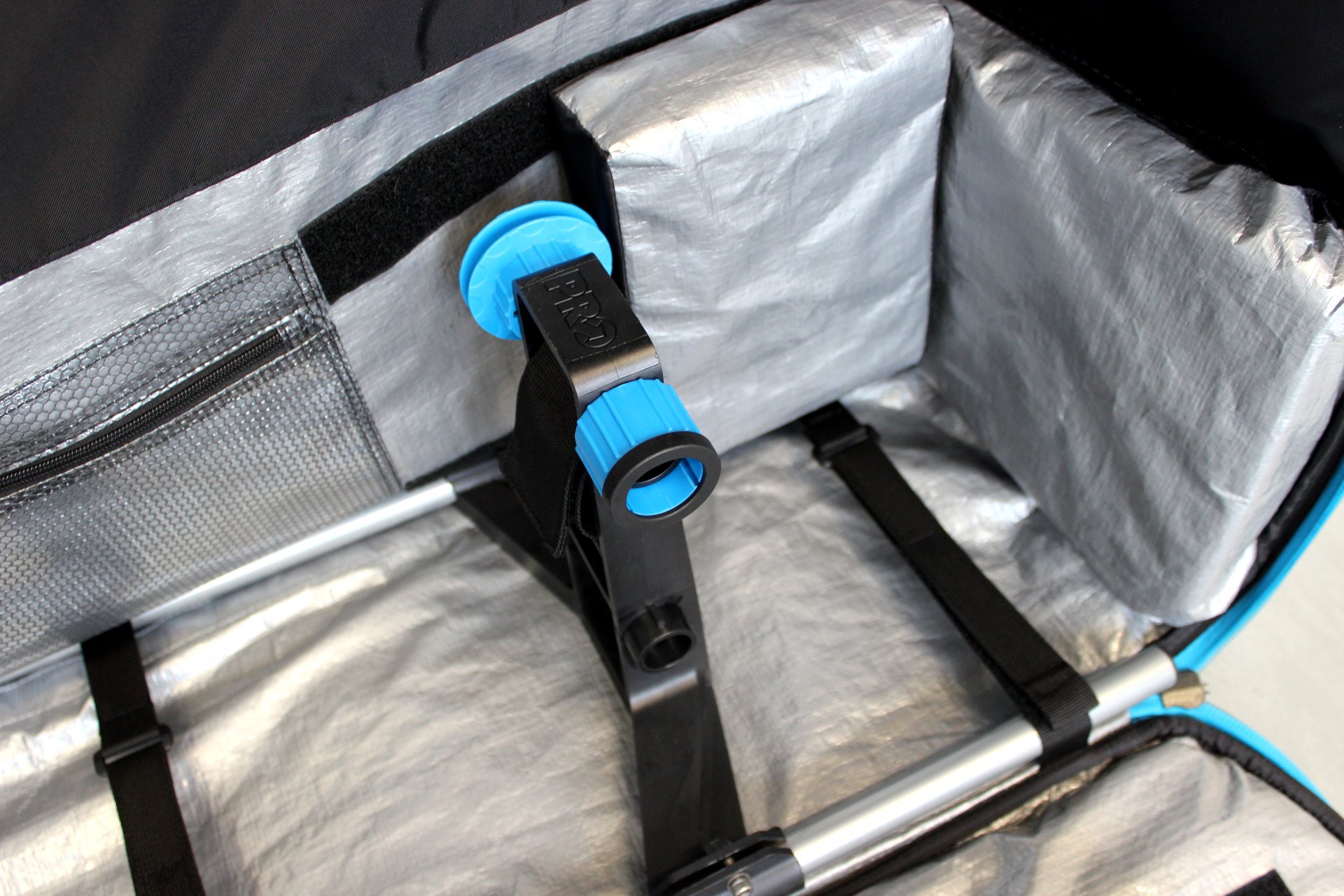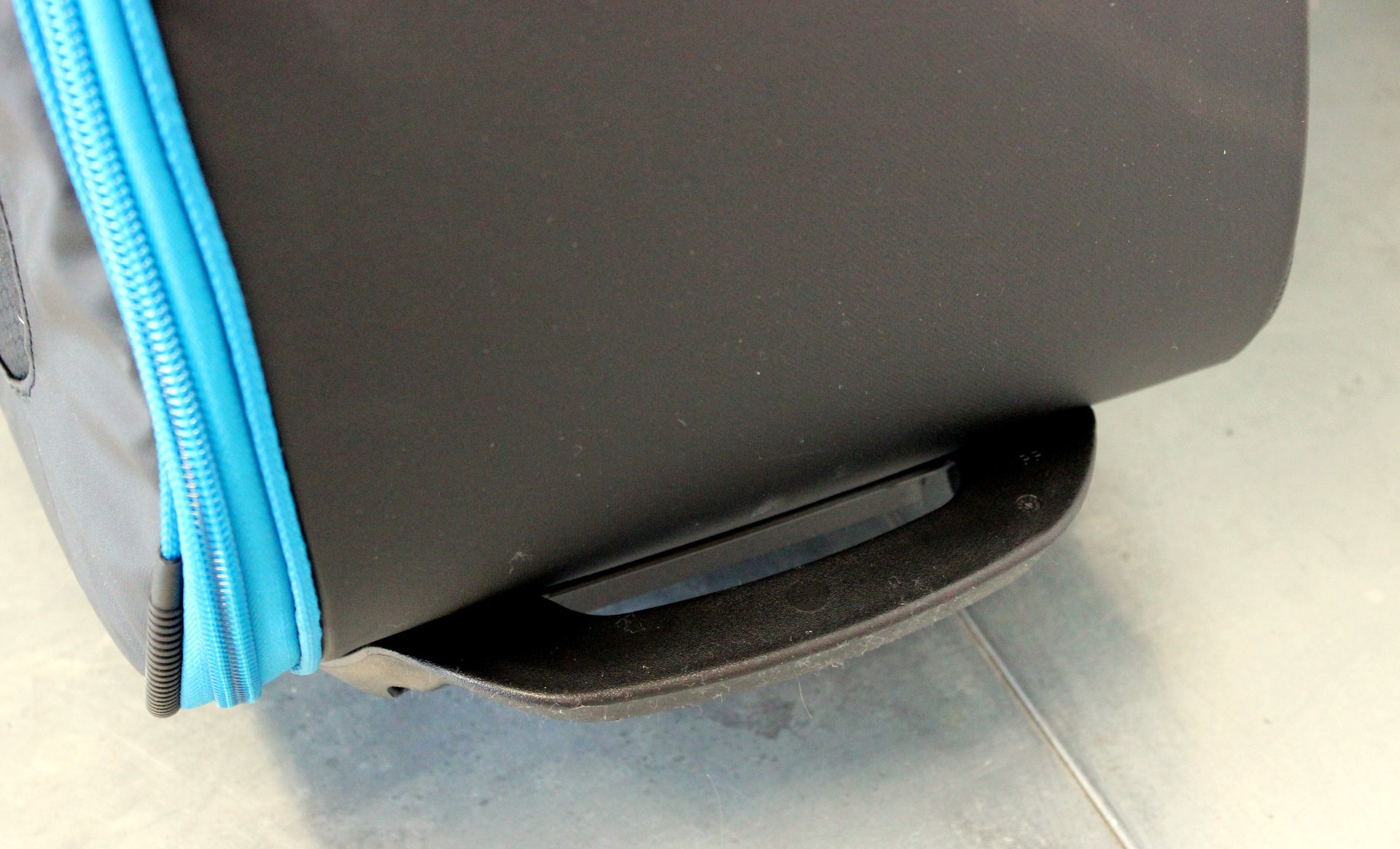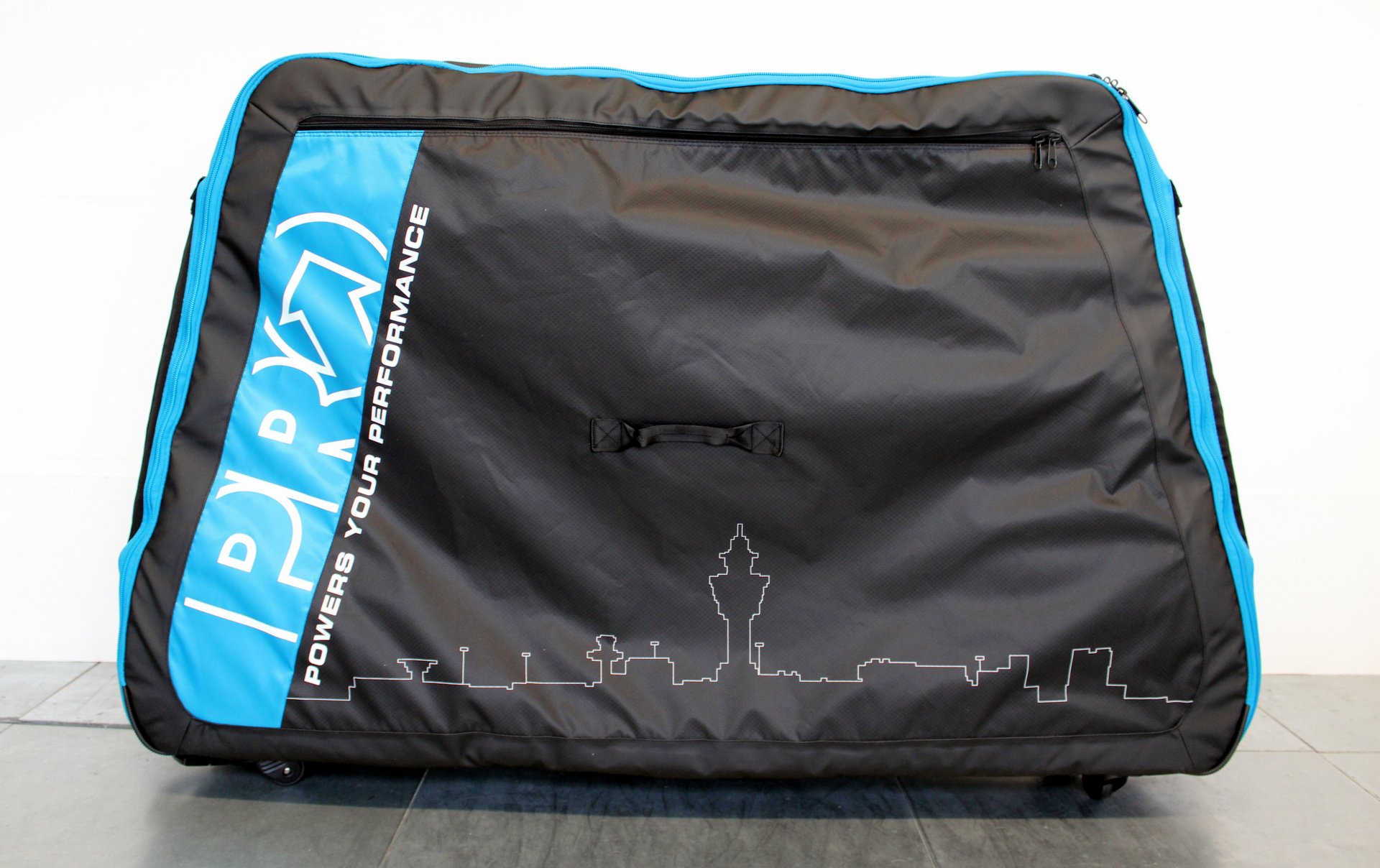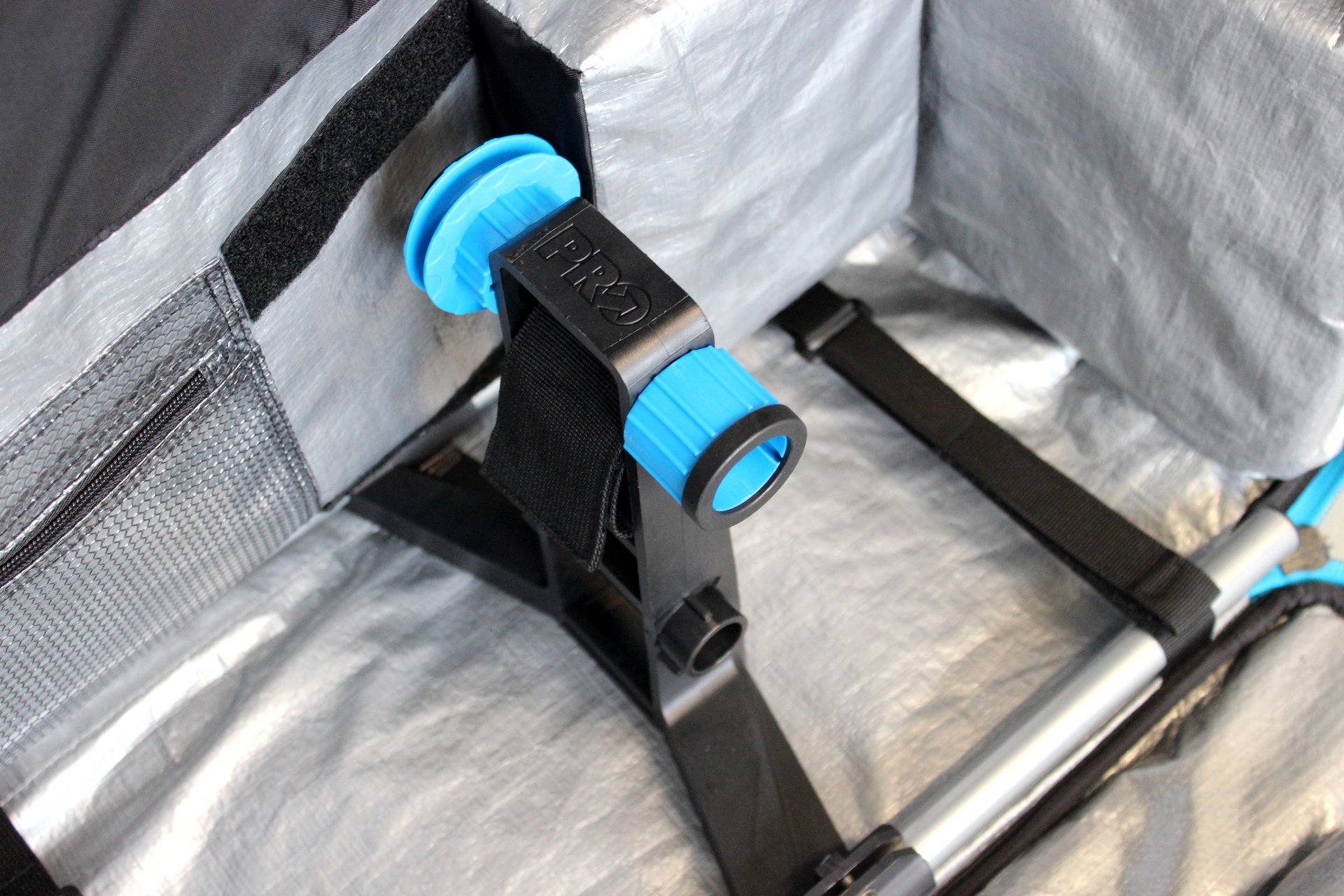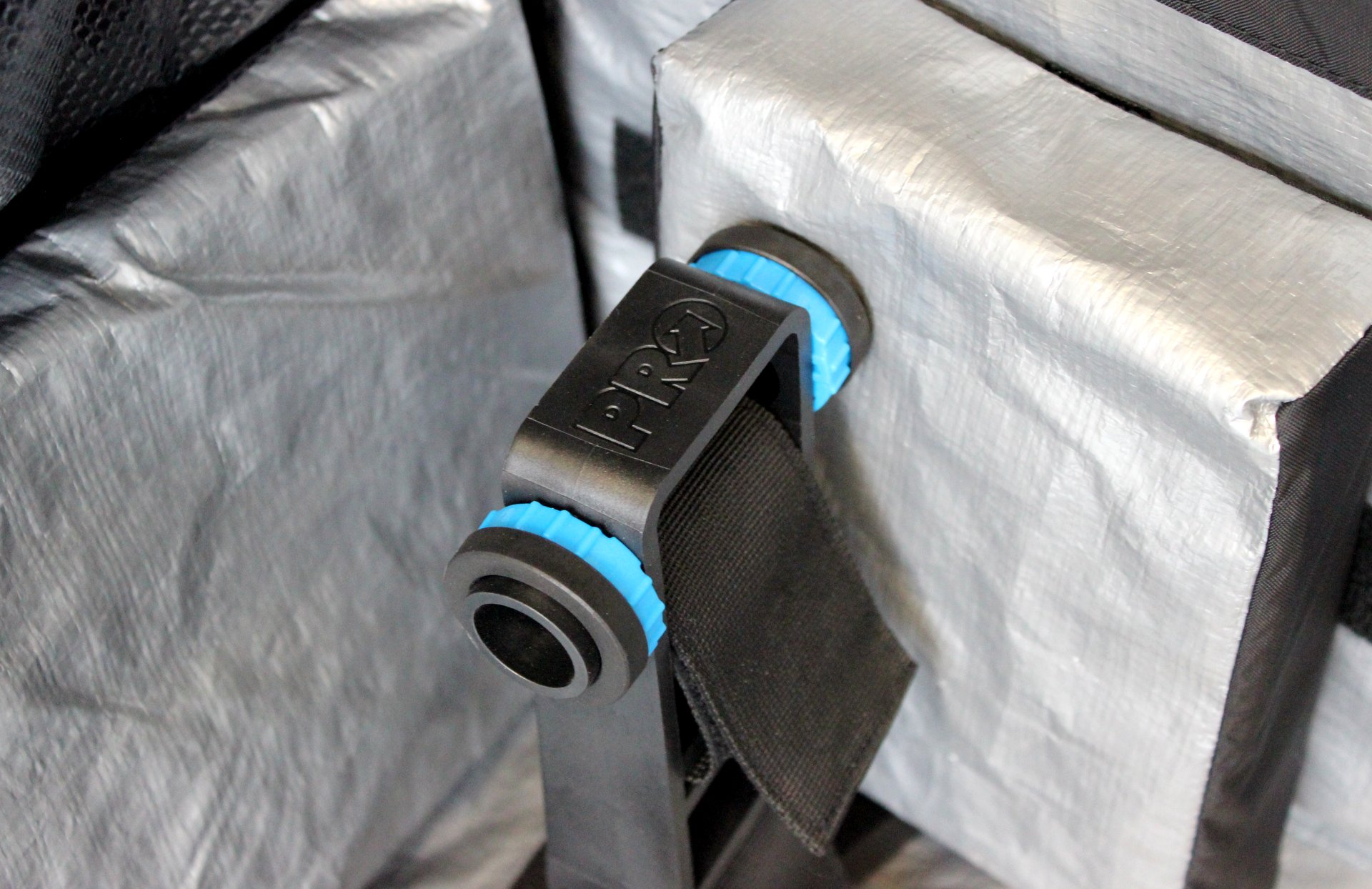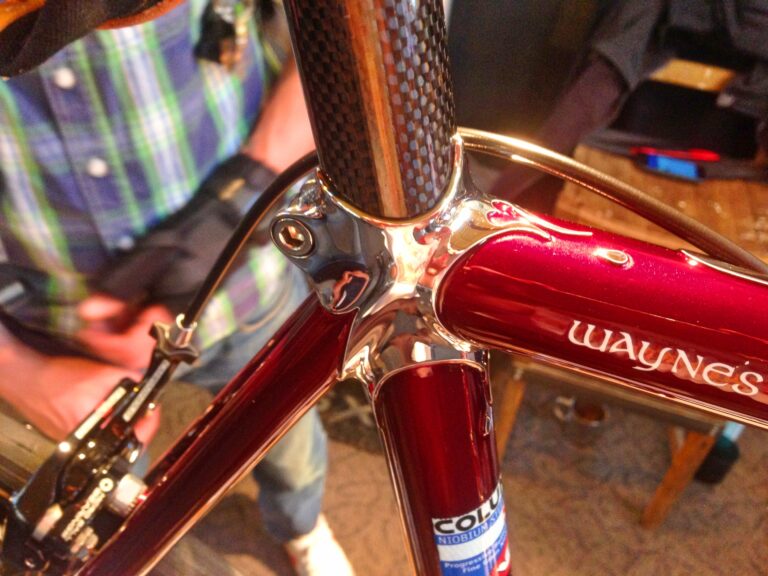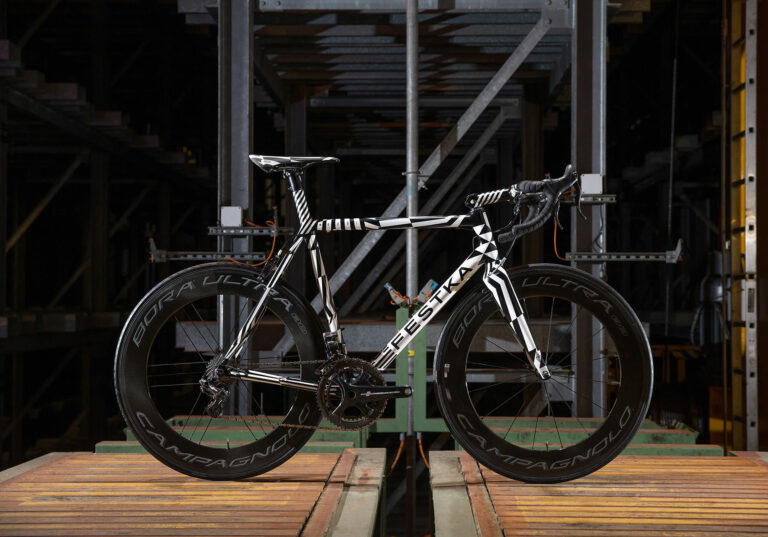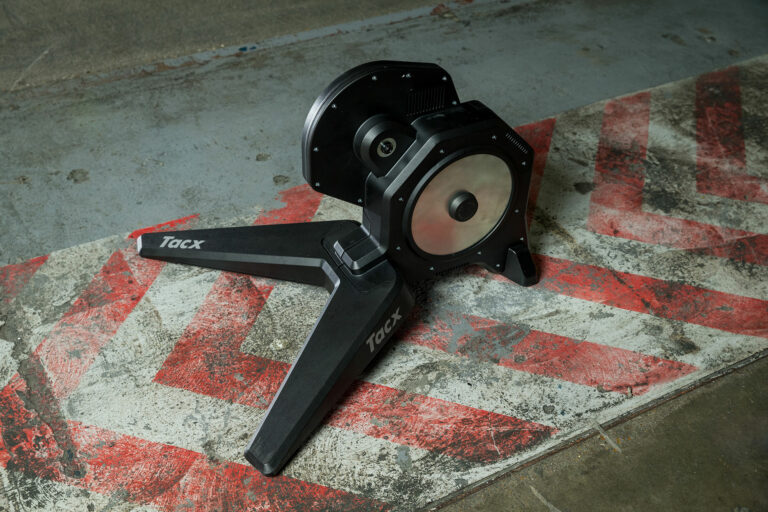So, was there any further evidence of weakness? The outer fabric is susceptible to marking and scraping if left on its side on the floor and dragged, as is possible when not in your possession. On getting it back from the Étape baggage shuttle crew I’d noticed it had been knocked over and left on its side. And while that does reflect slightly negatively on the service at the time, it also reflects negatively on the bike case too – you’d hope it could deal with a bit of potential mistreatment from time to time.
Also, on one of the journeys, I chose to make use of the helmet bag and keep my helmet inside, instead of strapped to my hand luggage. The end result? A decent lid – a Kask Mojito – returned off the return flight with a dent in the upper fascia, indicative of a whack or some fair pressure encroaching into the zipped cavities designed to hold such accessories. While superficial, the helmet remains dented and looks as though it’s been in an accident – not ideal.
However, despite the obviously rough treatment by a third party, the bike remained in place and secure, and suggests that although it’s overall hardiness can legitimately be questioned, it’s decent at performing its core job of retaining the frame in place.
Conclusion
The PRO Mega bike case is quite literally a mixed bag. It’s very easy to install your bike in, with the internal base frame adjustable to take nearly any size of bike, and the flexibility for use with mountain bikes, if that’s your thing. It’s also secure once the bike is in place, which at the core is what we’re after.
However, the innate weakness inherent to a bag construction over a hard-style box rears its head, not least through the damage visible on the external sidewall, and the cosmetic dents that appeared on my helmet after making use of the bag’s ability to carry accessories too. And, overall, it’s not the easiest to drive.
Bottom line? If you can trust your baggage handlers to look after it in your absence, then it’s a perfectly capable bike bag and will take care of your frame, with plenty of space for our bike, plus accessories if you want to leave them there. But if you can’t, then a soft bag with a sturdier construction or a hard case would be a safer option.
Pros
- Easy to pack
- Minimal bike fiddling needed
- Big and flexible capacity
Cons
- Weak outer fabric
- Susceptible to crushing forces/heavy impacts
- Difficult to manoeuvre
